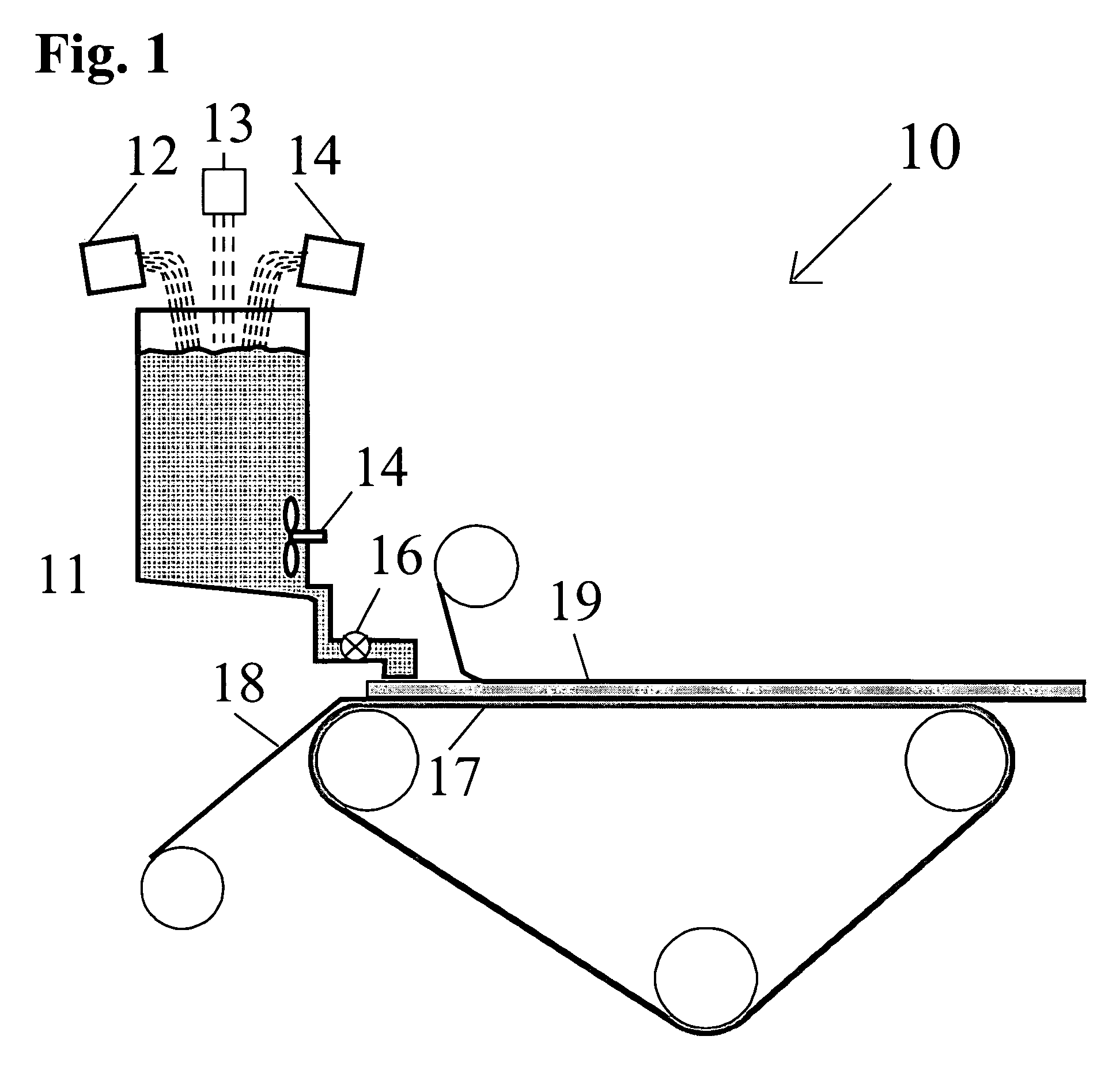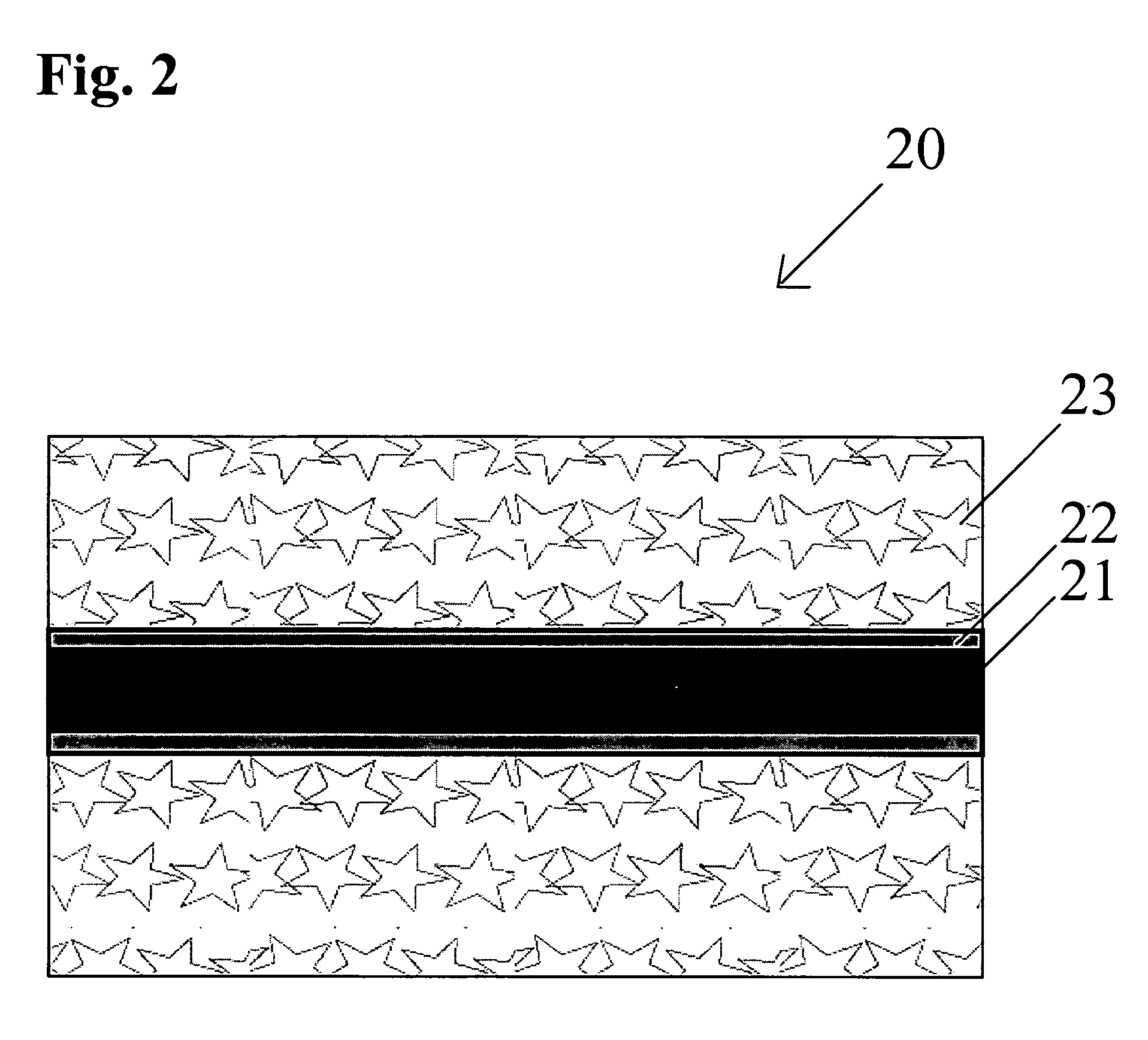Gypsum boards having glass fiber reinforcement with tacky compliant interface therebetween
a technology of glass fiber reinforcement and interface, applied in the field of improved, can solve the problems of loss of tackiness of the bond layer, poor bonding properties, etc., and achieve the effect of increasing flexural strength
- Summary
- Abstract
- Description
- Claims
- Application Information
AI Technical Summary
Benefits of technology
Problems solved by technology
Method used
Image
Examples
Embodiment Construction
[0029] The present invention provides a gypsum board having glass fibers coated with a tacky sizing. Individual glass fiber bundles are coated with a copolymer solution, composed of methacrylic acid and dimethyldiallyammonium chloride having a concentration of 1 to 10 weight percent. This polymer is available from Alco under the trade name Exp. 3819. The polymer is fully reacted with a molecular weight of 3,000 to 20,000 and is readily soluble in acidulated water to form a solution. This polymer solution may be coated on glass fibers by roller coating to form a tacky polymeric coating on glass fibers. In an alternate embodiment, alkali is added to neutralize or alkalize the solution, thereby precipitating the polymer out of the solution and delivering the polymer over the external surface of the glass fibers. At this stage, an agitator may be used in the vessel to deliver the precipitates to uniformly coat the surfaces of the glass fibers. The liquid may be filtered to separate the ...
PUM
| Property | Measurement | Unit |
|---|---|---|
| thickness | aaaaa | aaaaa |
| weight percent | aaaaa | aaaaa |
| weight percent | aaaaa | aaaaa |
Abstract
Description
Claims
Application Information
 Login to View More
Login to View More - R&D
- Intellectual Property
- Life Sciences
- Materials
- Tech Scout
- Unparalleled Data Quality
- Higher Quality Content
- 60% Fewer Hallucinations
Browse by: Latest US Patents, China's latest patents, Technical Efficacy Thesaurus, Application Domain, Technology Topic, Popular Technical Reports.
© 2025 PatSnap. All rights reserved.Legal|Privacy policy|Modern Slavery Act Transparency Statement|Sitemap|About US| Contact US: help@patsnap.com


